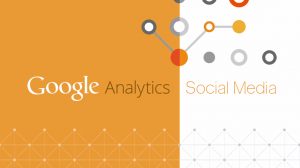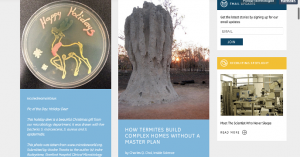— July 1, 2017
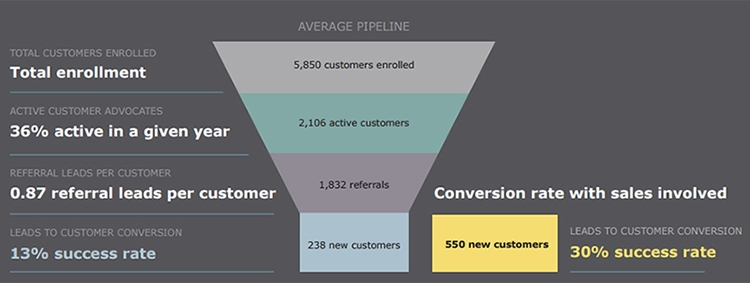
Impactful, strategy-changing customer engagement and referral program data just hit the market this past week. This data comes from the release of the new report, The State of Business Customer Referral Programs, and the webinar, Customers: Your most important source of demand, with Lisa Nakano, Service Director Customer Engagement Strategies at SiriusDecisions. In the webinar, Lisa discussed how customers need to be leveraged to impact demand via advocacy and referrals.
Based on that claim, it is interesting to investigate how customer referral programs are performing this crucial task and the success rate of referrals by companies running customer referral programs. This includes:
- The average referral activity of customers
- The kind of leads coming in directly from customer advocates
- How customer referrals are converting
- The impact of referral selling on the success of customer referrals
- How rewards figure into the success of referrals
What is the average customer referral activity a company can expect?
In the recent study done by Amplifinity based on millions of referrals made by business customers on the Amplifinity platform during the course of a year, it was determined that on average only 36% of customers are actively referring throughout the year. On average this was 2,106 customers making referrals out of the average enrolled in the referral program, 5,850.
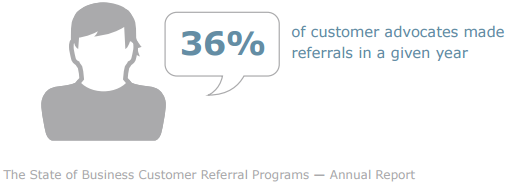
While the 36% may seem low, it is important to understand that this data is over the course of year, not the lifetime of the customer. That means that this percentage can also be attributed to how long customers have been enrolled in a program. Bottom line, there are a lot of willing customer advocates that need to be reengaged with to keep them active.
How high-quality are the leads that come from customer advocates?
Many times companies assume the easier the referral method, the more a customer advocate will engage within a referral program and the more new customers will be generated. This assumption isn’t necessarily true. Here is how the different types of referral methods rank in popularity.
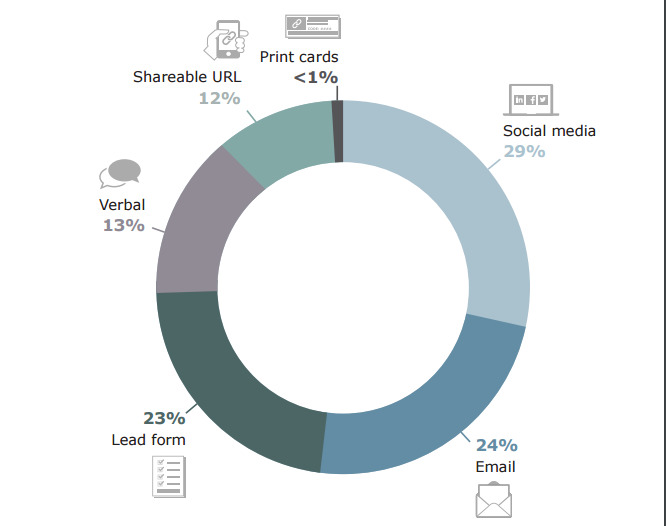
Most Commonly Used Referral Methods
As the chart illustrated, social media is the most used referral method even though it is was discovered that only 50% of referral programs offer it in the study. However, a referral from social media converted from lead to new customer less than 1% of the time. While referring in social media can be easy, this study showed that for business customers, a broad social blast doesn’t work for referrals. This is most likely because these aren’t one-to-one direct referrals from a trusted source. Therefore, while this type of referral is good to build awareness, it loses its power to generate demand.
The importance of that one-to-one interaction is further expanded on by Lisa Nakano when analyzing ADP’s demand generation tactics. In the webinar, Customers: Your most important source of demand, Lisa explains how many companies today have challenges with demand generation, because no matter how many times they email prospects or create targeted nurture campaigns their prospects only trusted what their peers tell them. To combat this Lisa told listeners ADP’s solution, “They [ADP] turned to Amplifinity as their partner and used referral marketing to bring in the positive word-of-mouth and activity to feed demand.”
Looking at the opposite spectrum from social media, the verbal referral method was only used 13% of the time but was the top source of conversion with 32% of referral leads converting to new customers. It also had a higher inclusion rate in customer referral programs, coming in at 54.4%.
Trisha Winter, CMO of Amplifinity predicts the continual rise of inclusion and use of verbal referrals, “Even though verbal referrals is fourth in overall use, this is a fast growing referral method thanks to new referral program technology introduced in 2016 that allows referrals to be captured from sales and customer success via Salesforce CRM. We predict verbal referrals will climb in adoption and usage in 2017.”
A large reason for verbal referrals having such a high conversion rate besides it being a one-to-one referral is that this method includes sales which increase conversions significantly. But more on that later.
What impacts referral program conversion rates?
The success of referrals has come a long way. Previous to the study done by Amplifinity, a B-to-B referral industry standard conversion rate of 3.63% was established by Salesforces’ Implisit. But the management and automation of a customer referral program has brought industry conversion rates to a whole new level. On average, customer referrals made on the Amplifinity referral platform had a 13% conversion rate.
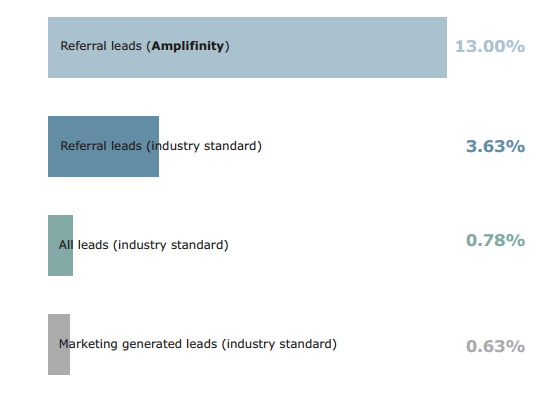
This is over 3x the referral industry standard determined by the Implisit study. This drastic increase in the success of referrals can be attributed to establishing referrals as a channel for demand generation as opposed to an ad hoc campaign. By automating programs to collect referrals at scale, companies are able to remove breakage and operational hassle so marketers can refocus their efforts on the promotion and optimization of the program.
Lisa Nakano commented on ADP’s referral conversion rate, saying “They [ADP] had some very nice results with this once they started understanding what they needed to do to activate their advocacy community. Referrals became their number one source of new demand. The conversion was amazing in terms of how quickly folks worked their way through the funnel and the percentage that converted.”
How does enabling referral selling change the referral conversion rate?
The Amplifinity report showed that enabling referral selling produced even better results. On average, a referral program that enabled sales to actively recruit new customers to the program, generate referrals from customers, qualify referrals through customers, and receive a facilitated introduction from customers more than doubled the average conversion rate. In fact, referral selling increased the average conversion rate by 17 percentage points, with a 30% average conversion rate.
This helps explain why verbal referrals were the highest converting method as it is a referral method enabled by sales.
The increase in conversions that referral selling delivers is a result of it being a further extension of the one-to-one referral. By enabling referral selling and breaking lead routing rules the trust that exists between the customer and their referral, and the customer and their salesperson can also be used to connect the customer advocate’s referral to their trusted salesperson. This way, any referral from the customer advocate will be automatically sent to that customer’s salesperson.
As an example of how the power referral sales enablement can contribute to demand generation, Trisha Winter pointed to ADP, saying, “ADP has stated they have higher customer satisfaction/NPS scores for customers who are advocates with them making referrals. Because they break lead routing rules, this naturally incentivizes sales to work on that relationship with that customer and have really great engagement.”
How rewarding are referral incentives to customers?
There has always been much debate over incentivizing referrals. For the most part, everyone now understands that the effort a customer puts into making the referral and following up on the referral, whether that is by helping sales qualify them or making an introduction, needs to be compensated like any type of work. The question now is, what reward amount should be offered to customers that is enough to incentivize them but isn’t prohibitive to the ROI?
Looking at the data, reward payments for the customer programs ranged from $ 20 – $ 2,500. The data was analyzed based on actual reward payments since many programs have varying reward amounts by product purchased or offer a percentage of revenue.
Overall, the most popular and most successful reward was between $ 41 – $ 100. But you shouldn’t take this to mean that a reward amount of $ 41 will drive referral success. In fact, the vast majority of these rewards were $ 100. While the overall average reward amount for customer referral programs came in at $ 111.
While this data might mean to some that they can provide a lower reward amount and still get results, that isn’t quite the case. Rewards must be provided to customer advocates not only as compensation for the amount of work they put into the referral but also based on the cost they are asking their referrals to spend. As the cost for a referral to buy goes up, there is more often greater success with a revenue sharing system, like Lisa Nakano talks about ADP in the webinar. While the data may show the success rate as lower for rewards above $ 100, that can be attributed to the natural decrease in the conversion rate of any higher priced service or product.
Business & Finance Articles on Business 2 Community
(107)
Report Post



